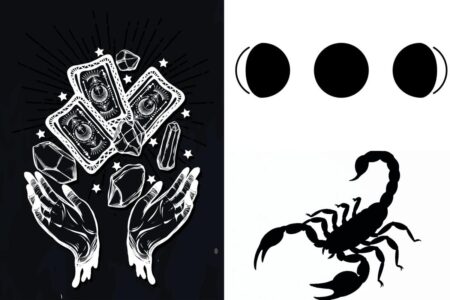Talk about a fish tale.
In a turbulent shake-up of New YorkтАЩs ultra-luxe sushi scene, Midtown newcomer Sushi Sho has managed to snag a coveted three Michelin stars тАФ overturning the proverbial boat of longtime Columbus Circle three-starrer Masa, which was downgraded to two after holding the top rating since 2008.
The Bryant ParkтАУadjacent counter, which opened quietly last year with little media attention and even less signage, is now officially the most powerful piece of fish in town, where dinner for two runs from $900 before drinks, extras and tax тАФ an extravagant experience thatтАЩs being called a тАЬborderline religious experienceтАЭ by members of the local omakase elite.
The fresh honor makes the Tokyo transplant the only new three-star restaurant in the Northeast U.S. to be added to the Michelin guide for 2025 тАФ a distinction that comes as no surprise to ardent fans, who have been flocking to Sushi Sho not only for the experience, but for the relative value it offers, considering Masa charges a competition-beating minimum of $750 per head, before drinks and tax.
What is the hype around Sushi Sho?
Located at 3 E. 41st Street, directly across from the New York Public Library, Sushi Sho has just a handful of seats and only two seatings per evening. The restaurant is helmed by Keiji Nakazawa, one of JapanтАЩs most obsessive and respected Edomae sushi masters.┬а
The Tokyo native operates hard-to-book spots in Japan and Hawaii, and now New York, where he follows the exacting Edomae tradition тАФ the 19th-century preservation-based style that involves curing, pickling, salting and aging fish rather than serving it тАЬjust killed,тАЭ the buzzy modern standard.
NakazawaтАЩs mastery of the style, which he helped revive after it fell out of fashion in Japan, adds another layer of distinction.
His team starts working before dawn, meticulously salting, brining and kelp-curing rare seafood like mehikari (rare green-eye fish), gizzard shad and monkfish liver served with pickled baby watermelon.
The omakase, a mesmerizing alternation of appetizers and nigiri, runs $450 before extras тАФ and many diners will order the extras.
Yes, Sushi Sho is really that good
Food blogger Seth Rudnitsky is one of many die-hard sushi devotees whoтАЩve managed to get themselves a seat at the bar тАФ┬аand gushed to The Post about the experience.
тАЬNo where outside of Japan is offering this much variety of such elite quality sushi,тАЭ he said. тАЬI had a borderline religious experience on Saturday night. I legitimately felt like a kid in a candy shop in Disneyland.┬аI absolutely believe it deserves three Michelin stars.тАЭ
Rudnitsky, who posted about his recent experience on Instagram, also praised the unusual hybrid omakase-okonomi style, calling it тАЬvery unique in the United States.тАЭ
тАЬThe first half of the meal is a shorter omakase, but the second half is okonomi or ├а la carte,тАЭ he explained. It allows the diner to order things they love for the expert sushi chef to prepare for them.тАЭ
Foodie Michael Ligier added to the chorus of praise in a recent social media post, calling Sushi Sho тАЬtruly one of a kind in the sushi space.тАЭ┬а
He praised NakazawaтАЩs blend of tradition and innovation, noting the inventive menu and the chefтАЩs global influence.┬а
тАЬThis was my single favorite sushi experience that IтАЩve ever had,тАЭ Ligier said.
Masa responds to the downgrade
Masa, the legendary Deutsche Bank Center sushi temple long ranked among the worldтАЩs best and most expensive restaurants, was demoted from three stars to two this year тАФ a blow for the one-time counter kings. Masa was the first Japanese restaurant in the country to earn the three-star rating.
тАЬFor 15 years, weтАЩve been honored to stand among extraordinary company, and IтАЩm so grateful to our guests for their enduring trust, loyalty, and friendship,тАЭ Chef Masayoshi Takayama said in a written statement.
He added that he is тАЬdeeply proud of the hard work our team puts in day-in and day-out,тАЭ and said the restaurant will тАЬcontinue to strive for excellence.тАЭ
Read the full article here














